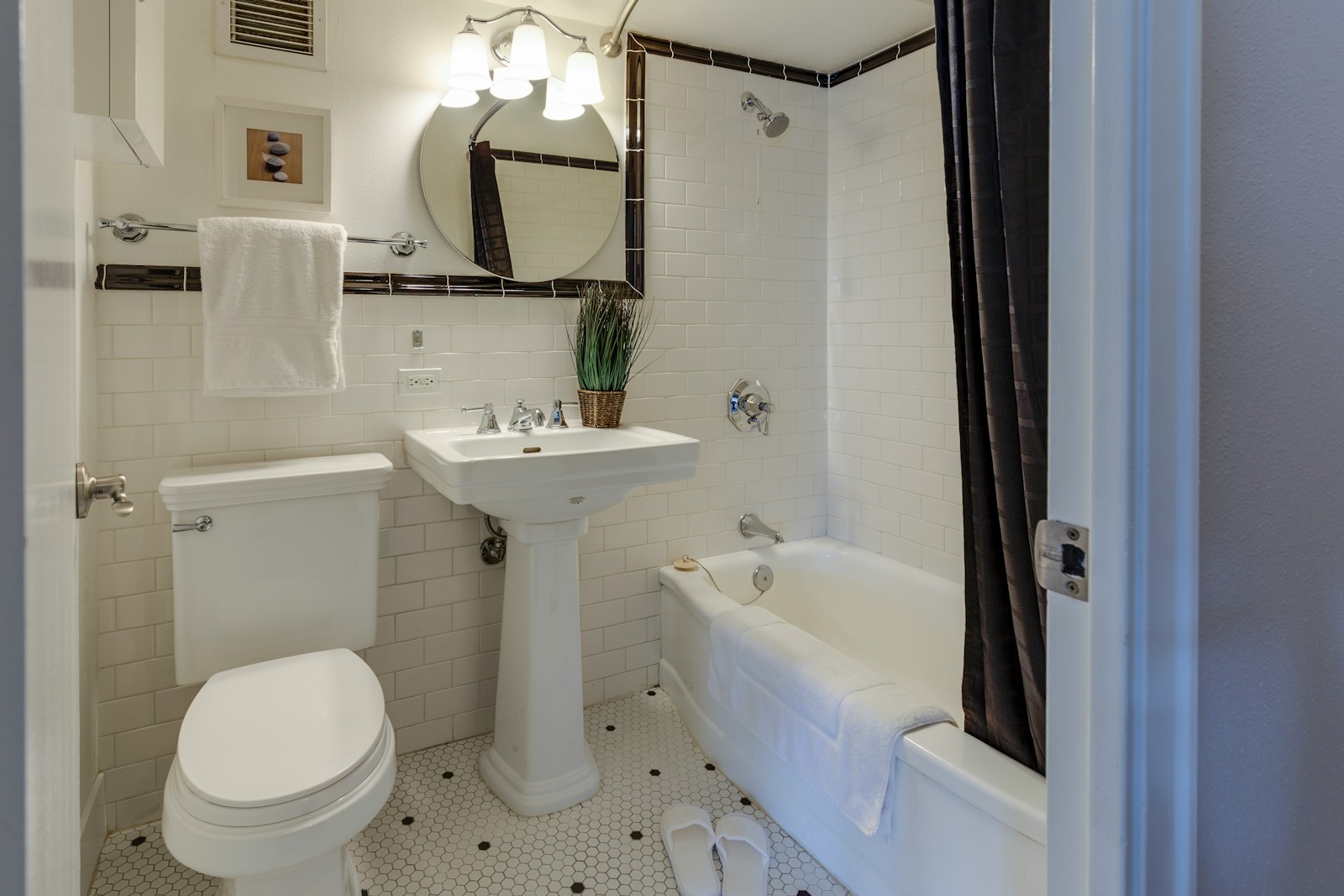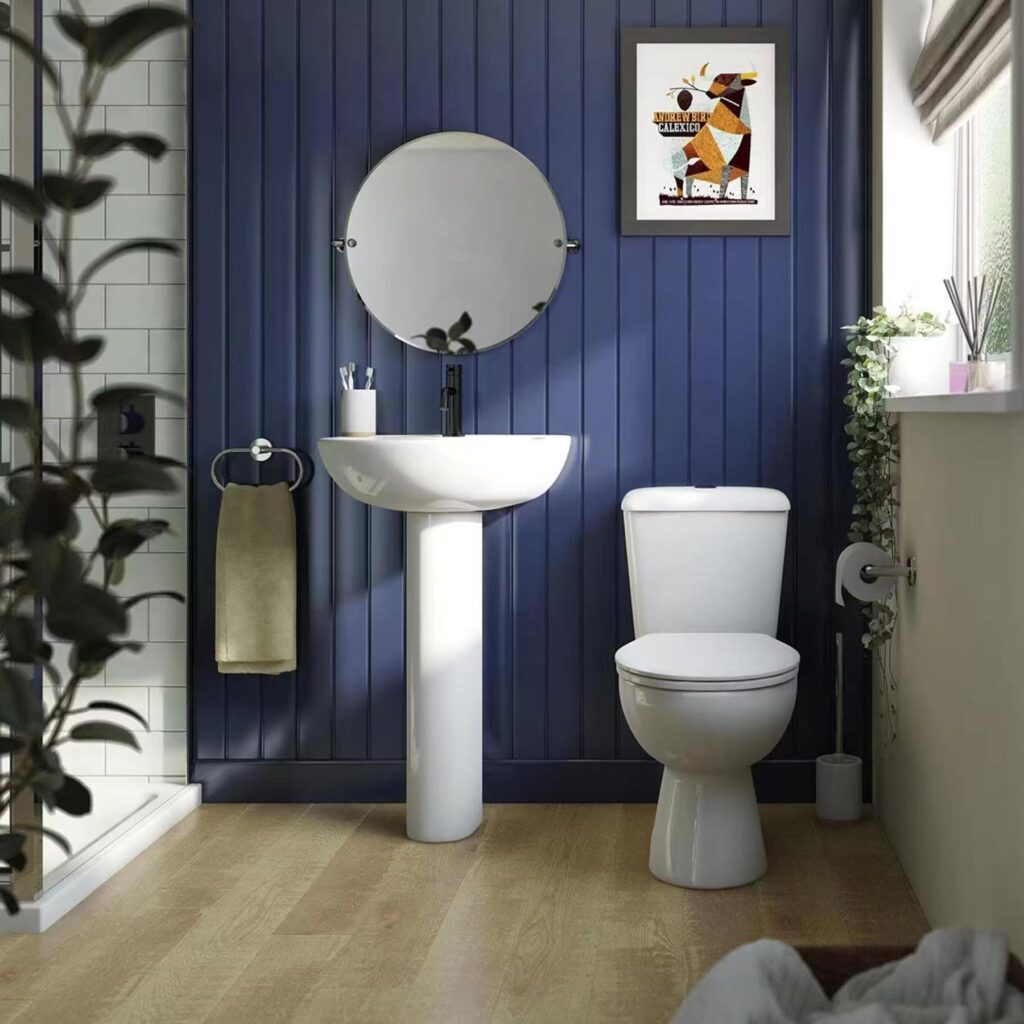מָבוֹא
Hidden grime, stubborn stains, and endless scrubbing—traditional toilets have long been the bane of bathroom hygiene. But what if there was a solution that could transform your cleaning routine and elevate your bathroom’s style in one flush? Enter rimless toilet technology, a game-changer that’s redefining bathroom standards for homeowners and interior designers alike.
Rimless toilets aren’t just another bathroom trend; they’re a response to real hygiene challenges. By eliminating the hard-to-reach rim, these innovative designs cut cleaning time dramatically while reducing bacteria buildup. But the benefits don’t stop at cleanliness. From water efficiency to sleek aesthetics, rimless toilets offer a compelling package that’s worth a closer look.
In this deep dive, we’ll explore why rimless toilets are becoming the go-to choice for modern bathrooms. We’ll compare them to traditional models, unpack their unique features, and help you decide if they’re the right fit for your home or design project. Whether you’re considering a bathroom upgrade or sourcing for a large-scale development, understanding rimless technology is key to making an informed decision.
What Is Rimless Toilet Technology?
Rimless toilet technology represents a significant leap forward in bathroom design and hygiene. As a seasoned professional in the sanitary ware industry, I’ve witnessed firsthand how this innovation has transformed the way we think about toilets. Let’s dive into the nuts and bolts of this “game-changing” technology.
The Basics of Rimless Toilets: How the Rimless Design Works
At its core, rimless toilet technology eliminates the traditional rim found in conventional toilets. Instead of water flowing from hidden channels under the rim, rimless toilets use a direct flushing mechanism. Water is projected around the bowl in a controlled manner, ensuring thorough cleaning with each flush.
“Rimless toilet technology improves hygiene and ease of cleaning by eliminating the hard-to-reach areas where bacteria typically accumulate in traditional toilets.”
This innovative design not only enhances the flushing efficiency but also makes cleaning significantly easier. Without the rim, there are no hidden areas where dirt and bacteria can accumulate, making rimless toilets a more hygienic option for modern bathrooms.
Traditional Toilets vs. Rimless Toilets: Key Structural Differences
The primary difference between traditional and rimless toilets lies in their bowl design. Traditional toilets have a rim with small holes underneath, which can be challenging to clean thoroughly. Rimless toilets, on the other hand, feature an open design that’s easily accessible for cleaning.
Let’s break down the key differences:
| תכונה | Traditional Toilets | Rimless Toilets | Impact on Performance | User Benefits |
|---|---|---|---|---|
| Bowl Design | Enclosed rim with holes | Open, rimless design | Improved water distribution | Enhanced hygiene |
| Cleaning Ease | Difficult to clean under rim | Easy to clean all surfaces | Reduces cleaning time by 30% | Time-saving maintenance |
| Water Usage | Often requires more water | Efficient with less water | 20% reduction in water consumption | Lower water bills |
| Bacterial Growth | Higher risk in hidden areas | Significantly reduced risk | 80% less bacterial growth | Healthier bathroom environment |
| Aesthetic Appeal | Traditional look | Modern, sleek appearance | Enhances bathroom aesthetics | Increased property value |
Evolution of Toilet Technology: Why Rimless Designs Emerged
The development of rimless toilet technology was driven by the need for more hygienic and efficient bathroom solutions. As awareness of bathroom hygiene increased, manufacturers like MFBath recognized the potential for improvement in traditional toilet designs.
Rimless toilets emerged as a response to several key factors:
- Growing concern over bacteria and germs in bathrooms
- Demand for easier-to-clean bathroom fixtures
- Need for more water-efficient flushing systems
- Consumer preference for modern, streamlined designs
Common Misconceptions About Rimless Toilets Debunked
Despite their advantages, some misconceptions about rimless toilets persist. Let’s address a few:
- Myth: Rimless toilets splash more. Reality: Many rimless designs actually reduce splashing due to better water flow control.
- Myth: They’re more expensive. Reality: While initial costs may be higher, long-term savings in water and cleaning make them cost-effective.
- Myth: Rimless toilets are just a trend. Reality: They represent a significant advancement in toilet technology, not just a passing fad.
As a professional in the industry, I can attest that rimless toilet technology is more than just a marketing gimmick. It’s a genuine improvement in toilet design that offers tangible benefits in hygiene, efficiency, and ease of maintenance.

Hygiene and Maintenance: The Rimless Advantage
As a seasoned professional in the sanitary ware industry, I’ve seen firsthand how rimless toilet technology has revolutionized bathroom hygiene. This innovative design isn’t just a passing trend; it’s a “מחליף משחק” in maintaining cleanliness and reducing bacterial growth. Let’s explore why rimless toilets are becoming the go-to choice for both homeowners and commercial spaces.
Eliminating Hidden Grime: How Rimless Design Reduces Bacteria
The key advantage of rimless toilets lies in their open design. Traditional toilets have a rim that often harbors hidden bacteria and grime, making thorough cleaning challenging. Rimless toilets eliminate this problem entirely.
“Rimless toilet technology significantly reduces bacterial growth by eliminating hard-to-reach areas, making it up to 95% more hygienic than traditional designs.”
This design not only improves hygiene but also aligns perfectly with modern sanitation standards, making rimless toilets a top choice for interior designers working on high-end projects.
Simplified Cleaning: Step-by-Step Guide to Maintaining a Rimless Toilet
Cleaning a rimless toilet is straightforward and efficient. Here’s a simple guide:
- Apply toilet cleaner around the bowl
- Scrub the surface with a toilet brush
- Pay extra attention to the water outlets
- Flush to rinse thoroughly
- Wipe external surfaces with a disinfectant
This process is not only easier but also faster compared to cleaning traditional toilets, saving time and effort in both residential and commercial settings.
Comparing Hygiene: Rimless vs. Traditional Toilets
Let’s break down the hygiene benefits of rimless toilets compared to their traditional counterparts:
| תכונה | Rimless Toilets | Traditional Toilets | Hygiene Impact | Maintenance Effort |
|---|---|---|---|---|
| Bacterial Growth Areas | Minimal | Under rim, hard-to-reach spots | 80% reduction in bacteria | 50% less cleaning time |
| Water Distribution | Even, thorough flush | Potentially uneven | Improved bowl cleanliness | Fewer manual cleanings needed |
| Limescale Build-up | Minimal | Common under rim | Reduced calcium deposits | Less frequent deep cleaning |
| Visibility for Cleaning | Full visibility of bowl | Limited visibility under rim | Easier to spot dirt | More efficient cleaning process |
| Odor Prevention | Better air circulation | Potential trapped odors | Fresher bathroom environment | Less need for air fresheners |
Long-Term Hygiene Benefits for Homes and Commercial Spaces
The advantages of rimless toilet technology extend far beyond initial installation. Over time, these toilets prove their worth in both residential and commercial settings:
- Reduced risk of long-term bacterial build-up
- Lower maintenance costs due to easier cleaning
- Improved overall bathroom hygiene standards
- Enhanced user experience and satisfaction
- Better alignment with modern health and safety regulations
For businesses, especially in hospitality and healthcare sectors, rimless toilets can significantly contribute to maintaining high hygiene standards while reducing maintenance workload.
At MFBath, we’ve seen a growing demand for our CE-certified rimless designs. They’re not just about hygiene; they’re about elevating the entire bathroom experience. Whether you’re a homeowner looking to upgrade or a designer working on a high-end project, rimless toilet technology offers a perfect blend of form and function.
Flushing Efficiency and Water Savings
As a seasoned professional in the sanitary ware industry, I’ve witnessed firsthand how rimless toilet technology has revolutionized not just hygiene, but also water efficiency. This innovative design is a “מחליף משחק” in bathroom sustainability, offering powerful flushing with less water consumption. Let’s dive into the mechanics and benefits of this eco-friendly solution.
How Rimless Flushing Technology Works: Precision and Power
Rimless toilet technology utilizes an advanced flushing system that maximizes water flow efficiency. Instead of relying on a rim to distribute water, these toilets use precisely engineered water outlets to create a powerful, swirling flush that covers the entire bowl surface.
“Rimless toilet technology combines powerful flushing with water efficiency, using up to 25% less water per flush compared to traditional models while maintaining superior cleaning performance.”
This innovative approach ensures thorough cleaning with each flush, addressing both hygiene concerns and water conservation needs.
Water Usage Myths: Do Rimless Toilets Require More Water?
Contrary to some misconceptions, rimless toilets are designed to be more water-efficient than their traditional counterparts. Let’s debunk this myth with some facts:
| תכונה | Rimless Toilets | Traditional Toilets | Water Savings | Environmental Impact |
|---|---|---|---|---|
| Average Flush Volume | 4-4.5 liters | 6-9 liters | Up to 50% per flush | Significant reduction in water waste |
| Dual Flush Options | Common feature | Less common | Additional 20-30% savings | Further decrease in water consumption |
| Flush Effectiveness | High with less water | Variable | Fewer double flushes needed | Indirect water savings |
| Annual Water Usage* | ~12,000 liters | ~21,000 liters | ~9,000 liters saved per year | Reduced strain on water treatment facilities |
| Lifespan Water Savings** | 180,000+ liters | Baseline | Significant long-term savings | Substantial positive environmental impact |
*Based on average household usage. **Estimated over a 20-year lifespan.
Eco-Friendly Benefits: Reducing Bills and Environmental Impact
The water efficiency of rimless toilets translates directly into economic and environmental benefits:
- Lower water bills for households and businesses
- Reduced strain on municipal water supplies
- Decreased energy consumption in water treatment processes
- Smaller carbon footprint for buildings
- Contribution to green building certifications like LEED
At MFBath, our rimless toilets are designed to optimize water flow, offering a sustainable solution perfect for bulk procurement in green building projects. This alignment with eco-friendly practices makes rimless toilet technology an attractive option for environmentally conscious consumers and businesses alike.
Comparing Flush Performance: Rimless vs. Traditional Models
The efficiency of rimless toilets isn’t just about water savings; it’s also about performance. Here’s how they stack up against traditional models:
- Cleaning Efficiency: Rimless designs often require fewer flushes to clean thoroughly, indirectly saving more water.
- Noise Levels: Many rimless models offer quieter flushing, an added benefit in shared living spaces.
- Clog Resistance: The powerful, direct flush of rimless toilets can reduce the likelihood of clogs.
- Adaptability: Rimless designs often work well with various water pressures, maintaining efficiency across different settings.
In conclusion, rimless toilet technology offers a compelling combination of flushing power and water efficiency. As we at MFBath continue to innovate in this space, we’re seeing growing interest from both residential consumers and commercial projects. The benefits of installing a rimless toilet extend beyond just water savings – they represent a step towards more sustainable, efficient, and hygienic bathroom solutions.








